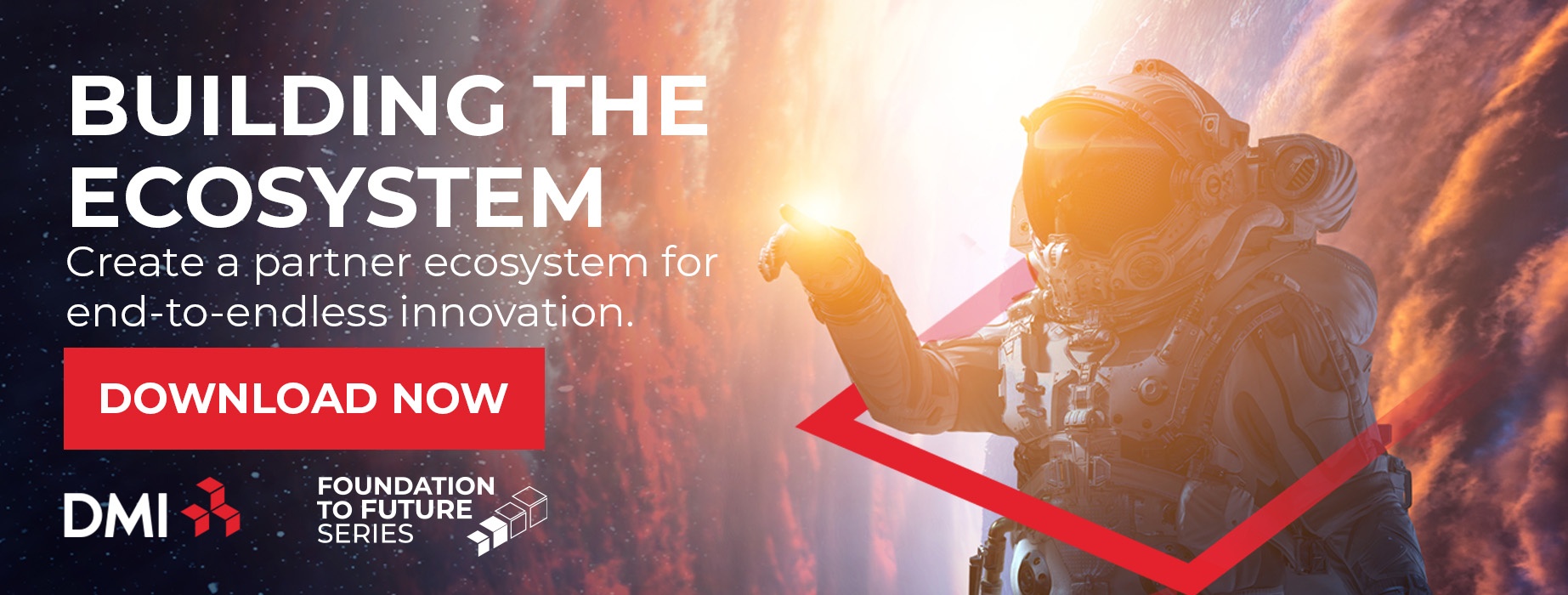
Why Understanding Your Constituents Is Crucial to Any Public Sector Digital Transformation Program
When partners in the public sector need our help with a mission-aligned technological solution, DMI always begins with the people being served by the federal or state entity.
This is a step that some will be tempted to skip – often because of a misguided idea that new technologies will automatically provide the constituent with a better experience.
But understanding the audience and their needs is a foundational step for identifying and implementing the right technology or solution to support the mission.
Lessons Learned from our Public Sector Partnerships
DMI works with partners across the public sector – from state and local governments to Federal defense, civilian, and healthcare organizations. Spending time to learn about the constituents our public sector partners serve drives more human-centric, data-driven experiences and outcomes. Understanding constituents also ensures that Federal and state entities avoid costly mistakes.
Several years ago, DMI worked with the U.S. Department of Health and Human Services (HHS) to redesign the Grants.gov web application process and develop a companion mobile app. At the time, constituents submitting grant applications needed to complete PDF forms offline and then upload the forms package within Grants.gov. The process was cumbersome for the constituents, which included representatives from universities, nonprofit organizations, small businesses, and state and local governments, among others.
Thanks to regular, in-depth meetings with Grants.gov users, DMI and HHS were able to jointly identify and implement a solution that delivers a robust, user-friendly application submission process. The new approach gives constituents multiple ways to complete and submit their applications within a collaborative online workspace.
DMI similarly stressed the importance of analyzing and understanding constituent users when assisting the U.S. Army with the modernization of their human capital management systems, which now gives over four million users access to their electronic personnel records.
And when DMI helped the Maryland Department of Health quickly deploy the GoVax hotline in just two weeks, the omnichannel digital solution suite was built with a laser focus on connecting with the state’s constituents wherever they were: The solution leveraged text, live chat, and phone calls and included integrations for Facebook, WhatsApp, iMessage, and SMS.
DMI’s human-centric approach prioritizes the people behind the screens and thus ensures that technology solutions align with the needs of the constituents being served.
“You can’t let the technology drive decisions,” said DMI’s Allison Mataya, Executive Vice President. “It’s unfortunately very common among organizations in our industry to think that all your users’ problems are going to be solved by just implementing a new platform without really understanding what they need or want.”
How to Learn More About the Constituents Served by Your Agency or Office
If your agency or organization is preparing to implement a technological solution with a partner, be sure you take time to truly understand the needs of the communities you aim to serve with that solution.
If you need help with this foundational step on your organization’s digital transformation journey, consider these recommendations:
- Segmentation: Not all of your constituents are created equal. Leveraging qualitative, quantitative, and behavioral data enables you to define your office's constituent base into concentrated groups with similar characteristics. This modeling allows you to communicate and develop experiences for each constituent target group.
- Communication Strategy: Once segmented, you can develop a communication plan for each constituent group. With the data in hand, you can deliver personalized messages that show you both understand your constituents and want to build a relationship with them.
- Omni-Channel Strategy: You may see the individual channels you have as separate, but the constituents you serve see them collectively as your office or agency. They want to be seen and recognized, no matter where they engage with you, in the same way and with the same data backing the experience. Choosing the right technology will enable a unified 360-degree omnichannel strategy.
- Measurement: Measure your engagement with your constituent base. This is not a one-and-done exercise but an ongoing process. Regular measurement and adjustment will encourage the changes needed to keep up with the shifting demands and preferences of the constituents you serve.
DMI Can Help You Understand Your Constituents
DMI is uniquely qualified to be your partner through this foundational process of getting to know and understand the individuals your agency or office serves while aligning innovative, robust, and versatile technology capabilities with your mission success. At our core, we are a people-centric organization that uses technology to meet the needs of our clients and help them transform the way they operate and deliver service to their citizens.
Technology is an integral part of the process, but only as an enabler. It doesn’t require the most expensive solution to accomplish your program goals, but it’s nearly impossible to reach without technology to support your activities.
As State, Local, Federal defense, civilian, and healthcare organizations embark on their digital transformation journeys, leaders must look at ways to engage constituents and stakeholders in the design and development process. This will drive human-centric, value-driven service models and solutions that increase interoperability, responsiveness, and cost-effectiveness.
Contact us to learn more about getting started with a digital transformation strategy for state and local governments.
![[FREE GUIDE] RECOGNIZE THE BENEFITS OF DIGITAL TRANSFORMATION THROUGH AN ECOSYSTEM APPROACH](https://no-cache.hubspot.com/cta/default/8444324/f8ee566c-b425-459e-978e-2b8f0eb44811.png)
